Colorific Collections
How true is our quote from two accomplished gardeners, Nori and Sandra Pope (see book review below). Color in our gardens seems to be an endless source of fascination and confusion. Are there trends that we are meant to be following? Does this flower come in other colors? How could you combine them to make a pleasing picture?
As readers of this column will know, I am obsessed with color and love to plant pink flowers. Beyond that, I am fascinated by what other people think of colors. Several recent incidents have reminded me how personal color experience is to each of us.
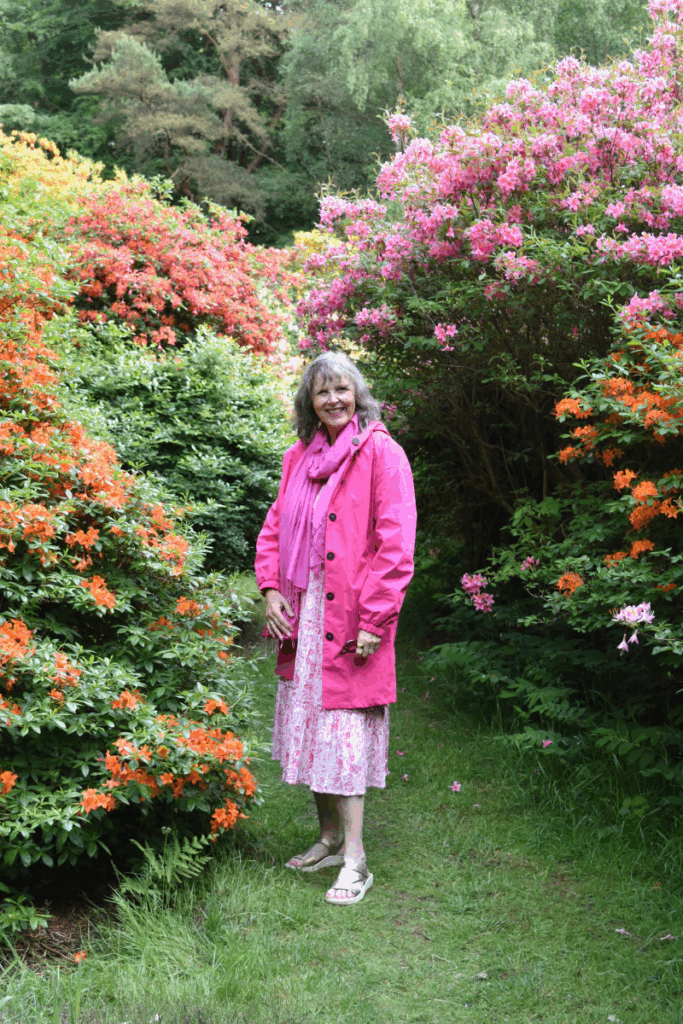
The individual experience of color in the garden begins with how we actually see color with our eyes. You may be partially sighted, color-blind, or unable to see from far away or close up. This is the scientific aspect of what you actually see. The second part of color is how we describe it to ourselves and one another. This is the artistic and societal side of color. It involves color naming, remembering, and association.
One of my particularly colorific garden visits was a recent trip to Munstead Wood. We had timed it perfectly, and the azaleas and rhododendrons were in full bloom. As most of you know, this iconic house and garden belonged to the English gardener and writer Gertrude Jekyll, and has been recently acquired by the National Trust. Gertrude was a supreme observer of color, and despite failing eyesight, was extremely accurate with her color juxtapositions. To have the opportunity to be among her garden creations when at their peak was akin to wandering through her still wet paint palette.
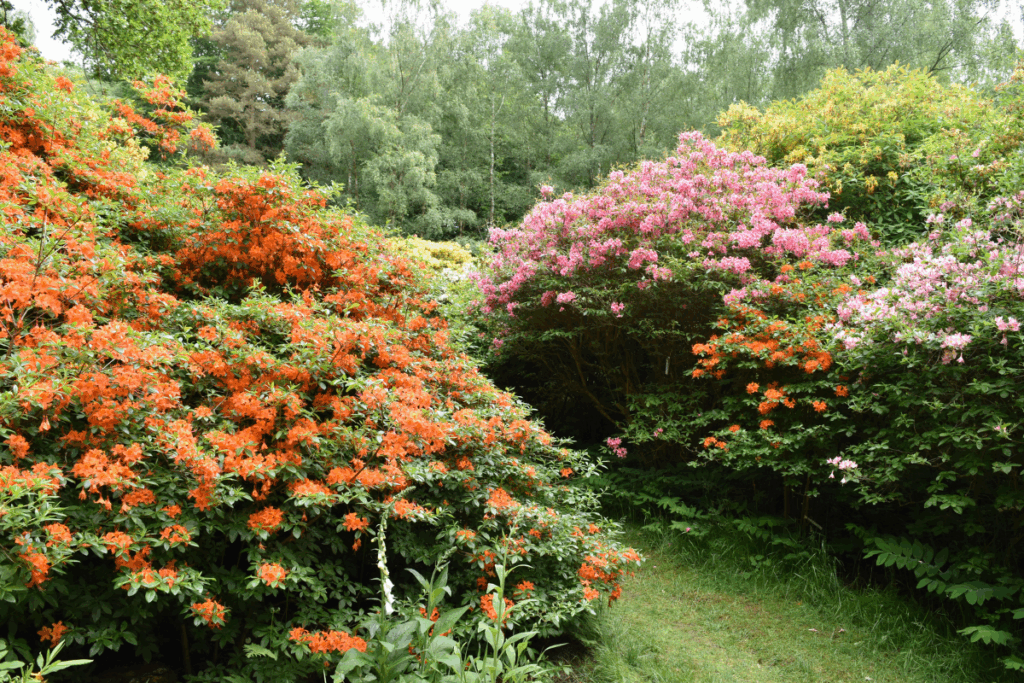
I have never experienced a collection that was so thoughtfully composed. I have visited other azalea collections that were just that – a collection, or a conglomeration. Munstead Wood continues, decades after Gertrude’s death, to be a tonal composition, more like a piece of music that you can walk through, rather than a botanic garden arranged by species.
Speaking of the scientific side of gardening, it is important to manage this unique creation for the future. Azalea and rhododendron specialists have been hard at work identifying them and sending these special plants to be propagated. All this will produce plants for future gardeners that may not be in commerce at all. It will also give garden historians a greater insight into this area of the garden that, amazingly, has no known planting plan.
If you have the ability to support this Munstead Wood project financially, please give generously to the Royal Oak Foundation in America and mark your contribution towards Munstead Wood. In the UK, give directly to the National Trust.
Ask Jenny Rose: Weeding in the Garden
The question this month is about how I keep up with weeding in my garden. It came from several visitors on a garden tour. I am not pretending that I don’t have weeds, but the main trick is to pull out weeds that are in flower, or that have gone to seed to stop further spreading.
There are a few other tricks that I use, especially if I only have a few minutes to weed. The first way is starting at one end of the bed and getting the worst weeds out until I am out of time – a sort of speed-weeding approach. The next time I am weeding, I start again at the same place and will get a little bit further along. In this way, you see real progress.
The second way is to scan the whole bed with squinted eyes and just find the largest, most bothersome, or seedy weeds and forget the rest for now. I call it the 80:20 rule. You are not taking all the weeds out; but either 80% so the bed looks great if you have time, or 20%, so that the worst offenders are gone for a quick fix. Never worry about getting them all out. It is not worth the headache.
A third way is to only look for one particular weed at a time – this takes away the need for much concentration and is very satisfying. Our particular nemesis at Northview is oxalis. We seem to have every shape, size, and color. If I can have a good oxalis pull, I feel virtuous and that I have accomplished something in my day. I hope this advice helps. Of course, there is much more to say on this subject.
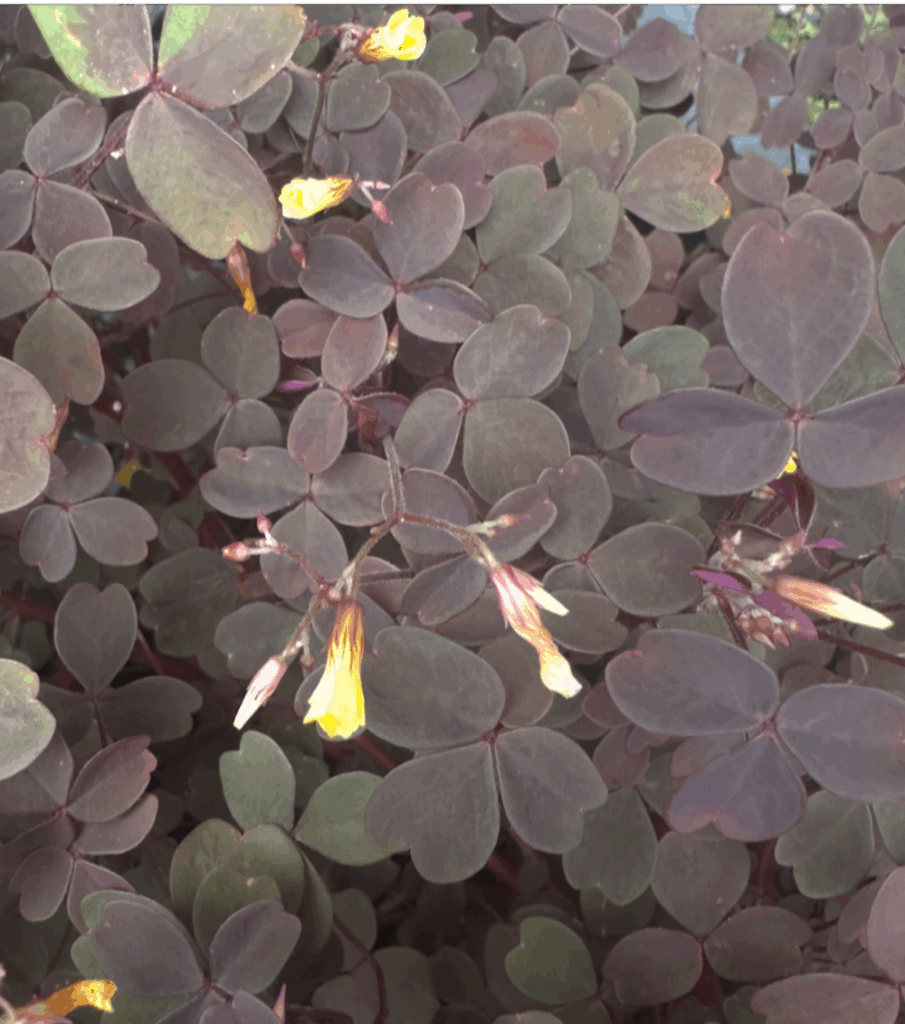
Please feel free to send me a photo and ask a question to be included in a future email newsletter. I will just use your first name and state or country unless you wish to be ANON. Keep those questions coming.
Notes from English Country Gardens – Part 1 – Forde Abbey
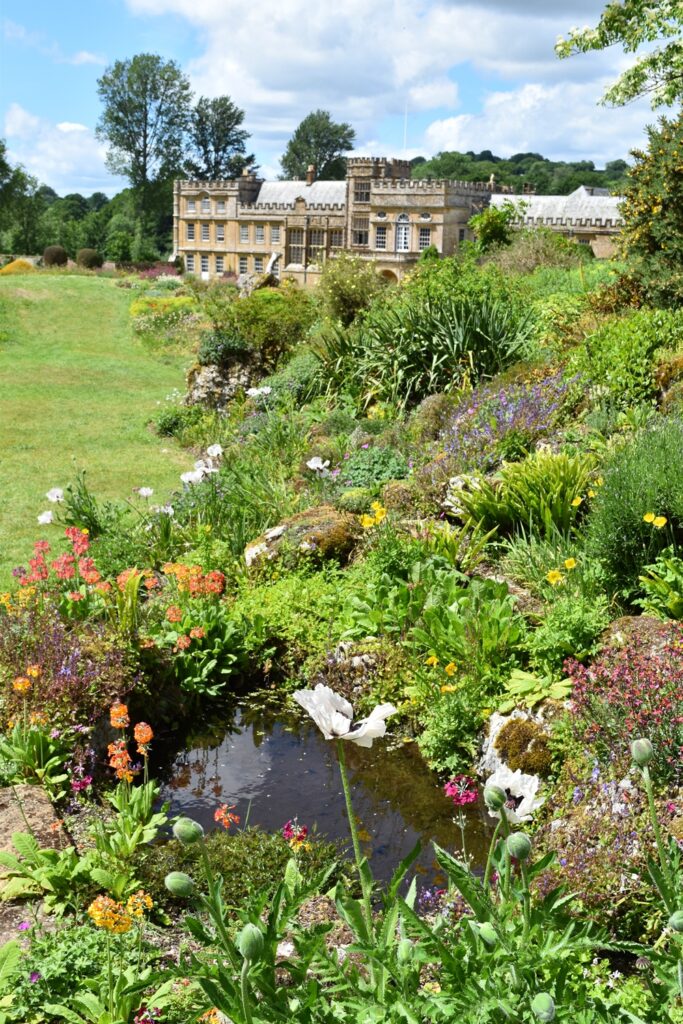
My blog this month is about some gardens that I visited on my recent trip to Forde Abbey in Somerset. I think that you are going to enjoy these flowery treasures.
It is easy to get overwhelmed when visiting a garden. There are scents, sounds, and visual experiences to take in and process. In this next series of blogs I will take images from some English gardens and explain how I walk around a garden and what I notice. These ideas will be random and include design, plants, and experiences.
Plant of the Month: Gladiolus
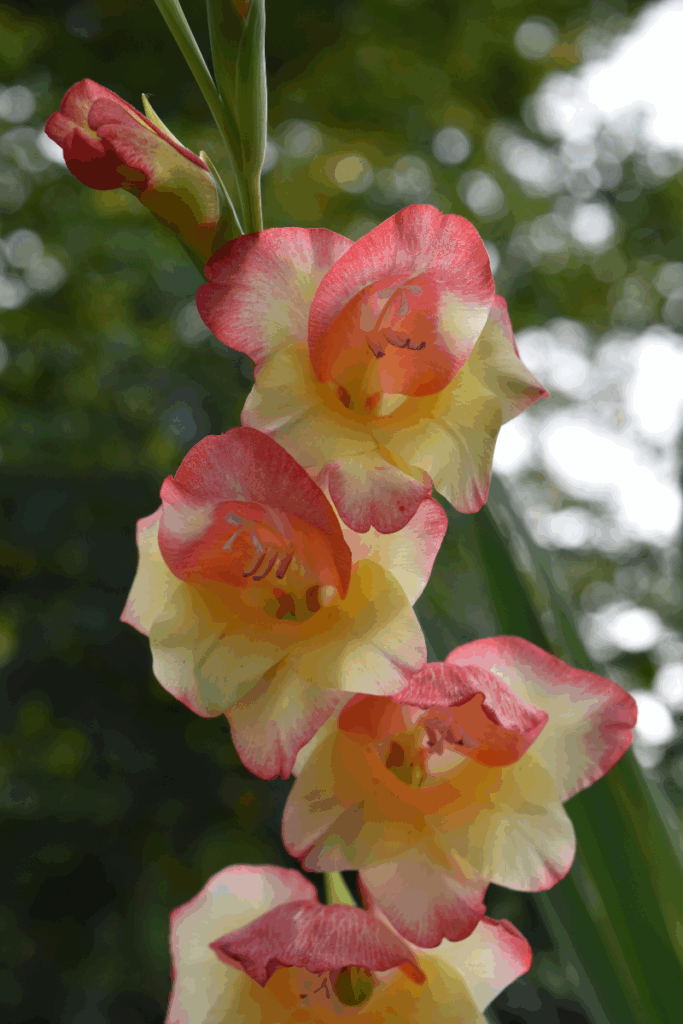
Inspired by all the saturated colors in our book of the month, I have chosen gladiolus as the plant to write about. Gladioli have gone in and out of favor in gardens, but they deserve to be more widely grown to add easy flowers to the summer and fall garden. When I was young, you would see gladioli planted in rows in the vegetable garden. They would be picked to use as a dramatic cut flower. They are still wonderful in this role but also think of them as a marvelously upright statement to add to a mixed planting or container.
Gladioli are planted from a bulb-like corm. Pop them into the ground about 6 inches deep, interspersed among perennials or in a patch by themselves. They will take about ten weeks to flower, so plant them soon. Then, they will add color to your garden in early autumn. Next year, try the trick of planting in batches every few weeks to prolong the show.
When buying gladiolus, look at the eventual plant height. The traditional gladioli are three or more feet high, and may need to be grown leaning against a fence for support. The Glamini and Primulinus gladioli are easier to support because they are shorter – growing to two and a half feet. They can all be used as a ‘grow through’ plant. Plant the corms quite close to a perennial, such as catmint (Nepeta), and watch the gladiolus spike come up through it.
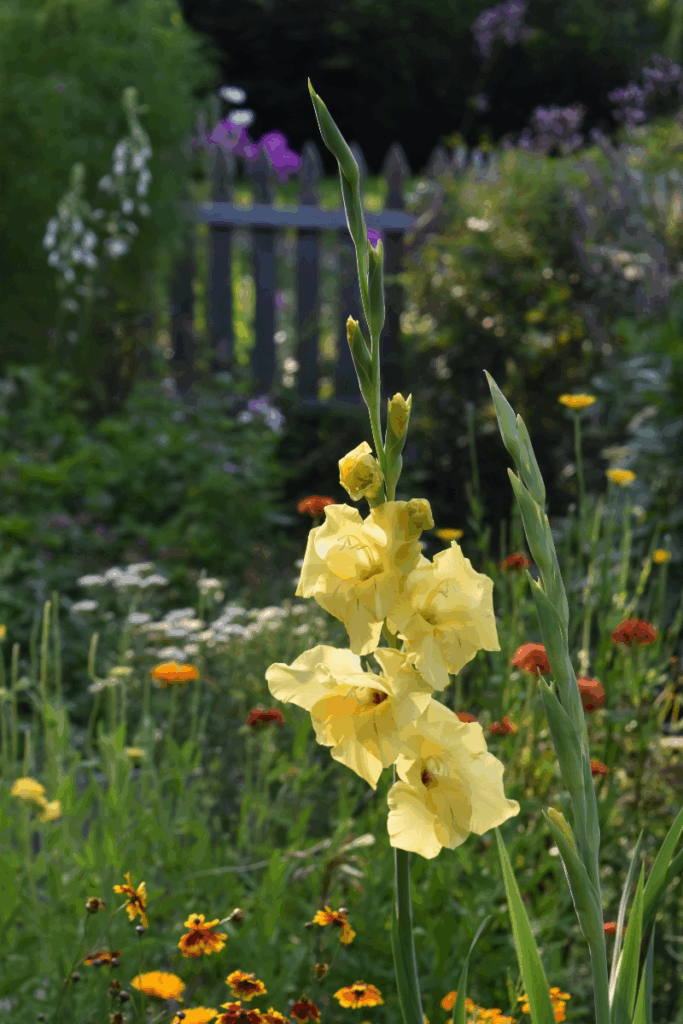
I love gladiolus for its rainbow’s worth of color. There are bold reds, rich purples, soft lavenders, perfect peach, and an exquisite chartreuse green. Some flowers are one solid color, and others have a contrasting eye. The shape of each individual flower is a trumpet, but they can have ruffles around the edges. I hope that you will give them a try.
Look out for my new book on bulbs, including gladioli, coming out this fall from Timber Press. It is available for pre-order now. Please pass the word to your gardening friends. Thank you!
Book of the Month: Color by Design; Planting the Contemporary Garden
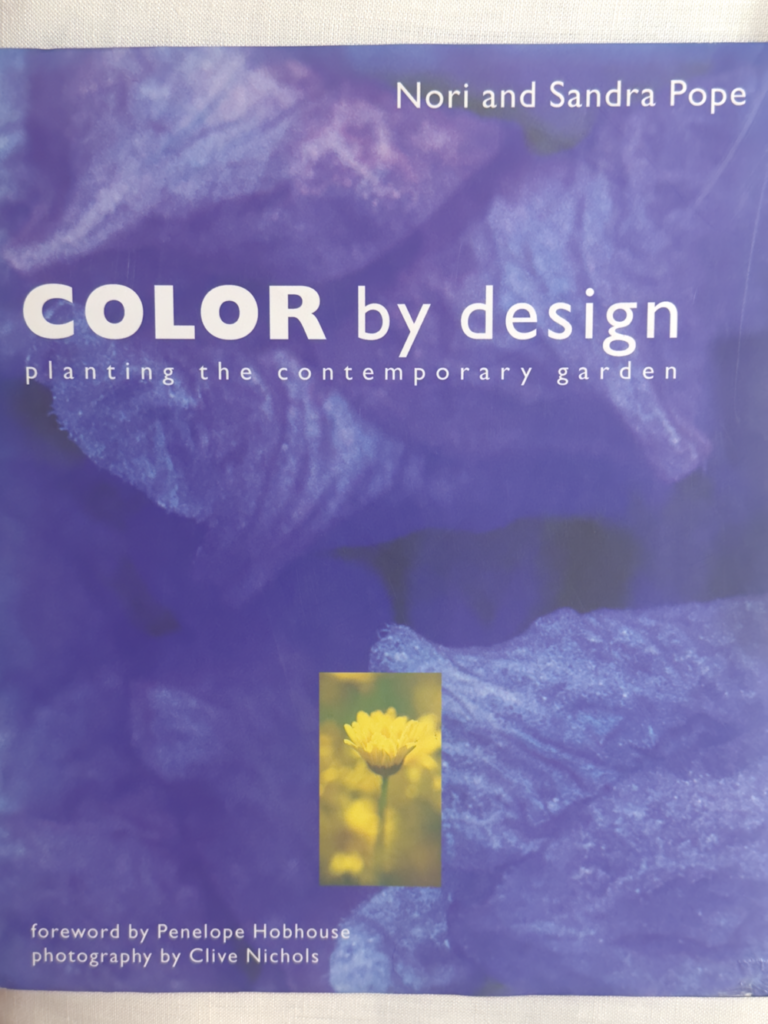
Nori and Sandra Pope arrived in England from Vancouver and found a garden that they couldn’t resist. The garden was called Hadspen House. This incredible garden had been gardened by the well-known garden-writer Penelope Hobhouse, so there were already some unique plants on site. From 1987 until 2005, they transformed the garden into a jewel box of a garden that was known for its bold use of color. As Nori Pope stated, “People talk about toning color down; I tell them I want to go right off the scale.”
The experiments with color at Hadspen House led to the writing of this book. The Popes designed special monochromatic beds for each color. In separate color-themed chapters, they describe how they keep each bed in the color scheme from spring through autumn. There are lovely photo montage pages that accompany each section. It is a thoroughly useful book for the color-minded gardener. The photos are by the well-known photographer, Clive Nichols.
The book also contains some interesting plant origin stories, such as this one about a poppy. They state, “One woman’s rubbish is another woman’s treasure. Papaver orientale ‘Patty’s Plum’ has the most exotic color in the genus, in pleated petals of deep mulberry silk, like the fabric of faded ballgowns. We admired this poppy in the garden of Patricia Morrow, a nurserywoman of great repute, who condemned it as dull and muddy, and demanded we dig it up immediately – which we did and named it after her.”
There are other plants that have their origins in this garden. Dicentra spectablis “Goldheart”, whose absolute discord of leaf and flower would please any Keith Jarrett jazz fan, such as the perfectly contradictory hues of our new Dicentra (now in the genus Lamprocapnos.)
Another plant, Gladiolus papilio “Ruby”, has an entire article written about it that you can read here.
There are other plants bearing the Hadspen name that date from the earlier Penelope Hobhouse garden and nursery. These include – Hosta ”Hadspen Blue”, Astrantia major “Hadspen Blood”, Brunnera macrophylla “Hadspen Cream”, and Salvia involucrata “Hadspen”.

The garden at Hadspen House is in Somerset and is now known as The Newt. The owner has generously sponsored the Chelsea Flower Show for the last few years. This year, they put on an exhibit of South African plants, including these unusual South African succulents.
In Case You Were Gardening…
Munstead Wood: Gertrude Jekyll’s House
Munstead Wood: Gertrude Jekyll’s Garden
If you like this newsletter, please tell your gardening friends about it. It is easy to subscribe by contacting me via my website or by scanning this QR Code:

If you would like to see photos of my garden at Northview and images of my garden travels, please follow me on Instagram @NorthviewGarden and @JennyRoseCarey
Bye for now,

PS: If you want to hear more of my thoughts and support me in what I do, check out my books. Glorious Shade celebrates the benefits of shade and shows you how to make the most of it. This information-rich, hardworking guide is packed with everything you need to successfully garden in the shadiest corners of a yard.The Ultimate Flower Gardener’s Guide gives home gardeners the confidence they need to create the flower-filled garden of their dreams. Instead of concentrating primarily on color, it brings flower shape and texture to the fore, helping homeowners make plant choices that come together in an aesthetically pleasing way.
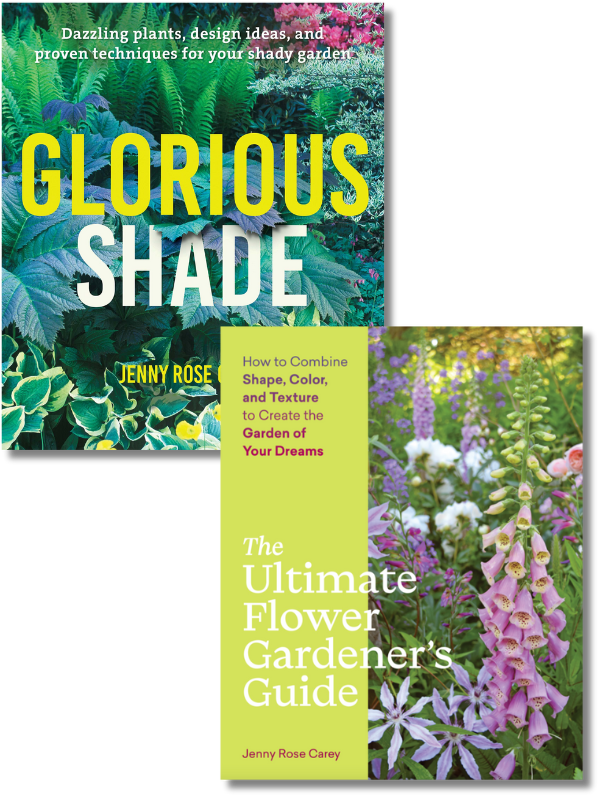




Leave a Reply